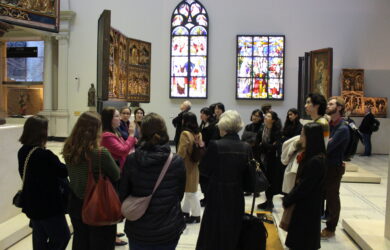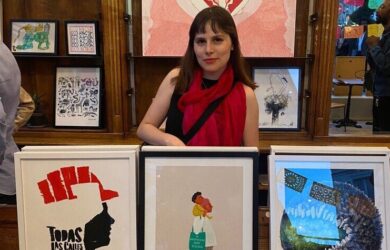People in developing countries are copying the glass buildings in the West to the detriment of their environment, claims a Gates scholar-elect.
Linda Gichuyia [2011] says that since the majority of new buildings in sub-Saharan Africa are replicas of buildings designed in the cooler west and do not take into consideration the differences in climate. This has led to the creation of buildings that are not thermally friendly.
She says this desire to mimic western buildings is combined with inefficient design, the fact that buildings are constructed using materials whose production is energy-intensive such as cement, steel, aluminium and glass and a poor understanding of thermal comfort, passive building principles and energy-conscious behaviour. As a result, major buildings rely heavily on artificial ways of controlling the indoor temperature: cooling, heating, ventilation and lighting. All of this increases the carbon footprint on the buildings.
“Architects in Kenya and in most countries in Africa are copying what the West is doing, but it doesn’t work,” says Linda, who will be studying an MPhil in Environmental Design in Architecture in the autumn with the help of a Gates scholarship.
“They need to balance the glass out.” Since the late 1980s, she says, African countries are increasingly constructing glass buildings. The emphasis is on a “sparkle finish” which consists mostly of a glass facade. Linda says: “The desire for this “sleek skyline” is often fuelled by the public who act as enthusiastic spectators from the terraces, cheering the designers on to do their thing, oblivious to the environmental impact of these ‘masterpieces’.”
While she was doing her undergraduate degree at the University of Nairobi, Linda researched an area of the Kenyan capital which has experienced a construction boom. “It was shocking,” she says.
“There were overglazed buildings and people would boil in their offices. We took the indoor temperature and they would be as high as 42 degrees. Outside was 30 degrees.”
Linda grew up in the small countryside village of Meru in Eastern Kenya, the second of four sisters. Her father is a doctor and her mother a high school teacher. When she was growing up she wanted to be a doctor like her father. “He really inspired me,” she says. However, she also loved design. “As a little girl I was deeply drawn to the architectural wonders I saw in books and magazines.”
At high school she excelled in both art and science.
At the end of high school she decided to work with her father at his health centre. She was drawn to medicine and wanted to help people, she said. “I watched people come in in pain and leave smiling.”
However, she just missed out on the points she needed in her exams to do a medical degree. She decided to opt for architecture instead.
She said her parents were very supportive and architecture brought together her love for solving practical problems and art. She was also very interested in learning about other cultures. “In Kenya,” she says, “there are 42 tribes and each has their own way of building.”
She applied to the University of Nairobi and was keen to specialise in environmental design. Her first year was about learning the basics of architecture. It was only in her second year that she could focus on the environment in the sustainable architecture unit. “I am a keen conservationist. The quality of the built environment affects everyone,” she says. “I want to improve people’s quality of life.”
For her final-year thesis she investigated the impact of buildings on climate change. “I think it is vital as an architect that you remember that buildings have a long life. Most have a 50 to 70-year life span. A building is a long-term commitment,” she says.
She adds that people tend to think of traffic and factories as the major contributors to carbon dioxide emissions when research shows 50 per cent comes from buildings. “Having a low environmental impact should be a built-in feature. Buildings should be designed to have the least negative environmental impact,” she states.
Since finishing her degree she has been teaching at the University as well as working part time as an architect. She wanted to continue her studies, though, so she applied to Cambridge because, she says, it was doing the best work in her field in the world.
After she finishes her MPhil she plans to return to the University of Nairobi and continue to both teach and practice. “I do not want to be solely in academia and lose touch with architectural practice,” she says. “I want to be a professor, but with my architecture firm on the side.”
She is very excited to be a Gates scholar at Cambridge, especially since she has never travelled out of Kenya. She did her Gates interview on the phone. She says: “Being a Gates scholar is an opportunity to interact with all those people with great minds from different backgrounds. As an architect I cannot fail to marvel at the buildings in Cambridge. I have studied Kenyan architecture for the last 10 years. I am looking forward to seeing Cambridge for myself. I cannot wait.”












